In my article “Pil Sung: The Embodiment of the Tenants of Tae Kwon Do,” I defined Pil Sung’s significance and pulled from the phrases depths the tenants of Tae Kwon Do and discussed their meaning and application to one’s personal life and how that can have an influence in society.
In this article, the phrases meaning and application as a Martial Art mindset as an action

dynamic in a practioner’s training approach and a person’s self-preservation initiatives during life threating situations are examined and integrated into every aspect of living: in other words, Tenacity – the quality to persistently and decisively stay the course, no matter what comes.
Whether pertaining to Martial Arts class time or street survival, Pil Sung – “I am confident of certain victory” means accepting ones limitations and DOING not TRYING. On the training floor or in a fight for one’s life, to dither is to die.
In class, mental-spiritual or physical hesitation becomes a “contact” learning opportunity; on the street, it becomes a “burial” opportunity. Consider…both venues are a place where the practioner must MOVE, i.e., doing something is better than doing nothing and doing – the something – correctly is better than doing it incorrectly. Class time is to correct errors in techniques, its application, meaning and performance. On the street, it’s too late to “fix” the technique one’s instructor has been “harping” upon.
In either environment, “to try” is to accept the possibility of failure. In a life threatening situation, an “I’ll try” mindset or tentative approached to action is not an option. The reason “I’ll try” is the wrong thought process and physical endeavor is that “trying” has the element of “NO COMMITMENT.” Ergo, we must have the Pil Sung approach and go for it, “hook, line and sinker” to succeed. One has to MOVE! The Martial Art practioner must commit to explosive force – mentally, spiritually and physically – rather than just putting forth tentative effort.
U.S. Navy Seals, Army Rangers, U.S. Army Special Forces (Green Berets) and Marine
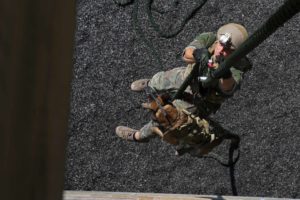
Force Recon/Raiders personnel are known for their dogged determination to ‘complete the mission.’ Their training regimen takes commitment and melds it into each Spec Ops member’s blood, bone, sinew, spirit and mind. All that these individuals go through to become part of that elite community is designed to make them into the most effective military units in the world. They are “Pil Sung Warriors.” Their training environment may not use those words, but the concept is blatantly built upon and ingrained. It’s driven not only into the physical combat and technological skills each member requires, but is also hammered into their mental and spiritual components. They have to be just as developed in their mental / analytical skills and inner spiritual identity as they are in hand to hand combat or weapons systems capabilities.
The Martial Arts practitioner does not have to go to Seal School to learn the vital spiritual persistence and combat self-defense concepts of “all in” and “get it done.” Under the right instructor, the total commitment attitude and explosive force to “Do” rather than “Try,” no matter one’s limitations, can be developed.
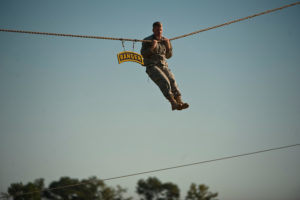
It is not a matter of what a practioner cannot do; rather, it is DOING what can be done with the tools, health, and ability the practioner has. For a student to focus on the punch and block they cannot perform due to a missing arm is to fail. Instead, the hoc sang must develop everything else – commit to perfecting what can be done with the rest of their body. Put another way; don’t allow, for example, a sprained ankle, ruptured planta fascia or severe knee injury to side line a Martial Art goal or career. The person must decide “Do I want to be a Martial Artist or not.” If so, then stop finding excuses not to practice and train; – Go to class – become committed. Do what can be done with the way things are.
On the street – there is no other option – a person is either committed or crushed in a split second’s passing. That is not to say that decisive Pil Sung action will always win the day. It is to say that a moment’s hesitation or a tentative effort will surely not succeed. Serious injury or death is not worth the hours of uncommitted training nor tentative reaction.
To be ready, one has to train with Pil Sung commitment and focus. Such traits must become second nature. Yes, acknowledge that a disability or injury is there. It must be worked with, allowed to heal or be rehabilitated. Whatever the situation, though, go to class. The key is not letting the disability or injury prevent continued growth in other training aspects and skill development. Diligent training in spite of the difficulty – no matter the type – is the secret. The regimen may have to be modified – no mater. “Improvise, adapt and overcome” as the Marines say. Such an approach to Martial Art training can spill over into life’s other areas and pursuits. It’s a “win – win” endeavor in most situations.
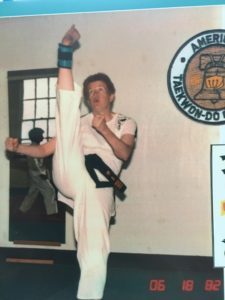
Lest the reader questions my adamant thesis, I briefly recount my own experience with severe injury. During a sparring match in my second year of training, I received a powerful kick to the inside of my right knee. The damage was considered permanent by the attending physician. I refused to accept his diagnosis. A couple of days later, I went to class and trained leaning on my crutches. I refused to allow the knee pain and the hassle of the crutches to daunt me. I refused the doctor’s prediction that I would never walk right again. It took several years, but with persistent effort and a careful training regimen, I rehabilitated the knee and leg until it became my primary launch leg for jumping and flying kicks.
How a student trains and practices, the habits they acquire and the inner spirit they have developed will affect how they react when tested outside of class. One cannot pick the time they will encounter peril; ergo, a commitment to movement and explosive force from spirit, mind and body must become an involuntary reflex, not a preplanned strategy. On the street, self-preservation precludes the micro-second hem-hawing hesitation hazard. My personal experience has verified this truth more than once. On one occasion while stationed stateside during my military career, I was called to a violent disturbance situation at one of the base housing locations. There had been a fight and stabbing. A person was on a stretcher being loaded into an ambulance as I drove upon the scene. My base police personnel where inside the dwelling trying to talk the perpetrator into dropping the butcher knife just used to stab the guy being taken away in the ambulance. The complication was two small children huddled in fear across the room. I caught their eye and stepped into the room at an angle between them and the perpetrator. I beckoned the kids to me and hustled them out the door. Not seconds after the kids were safely in the next room than the perpetrator charged me lunging the knife at my middle.
There was no time for me to stand and analyze which technique was better at that moment. Years of Pil Sung training erupted – instinctively I moved, blocked, pushed the attacker’s face and chest into the wall behind me while locking the knife wielding hand and arm behind the attacker’s back. The apprehension was made and the military legal system took over.
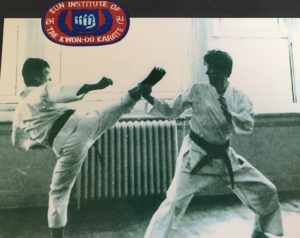
Dedicated class participation and self-practice on a regular basis with the focused goal of becoming the Martial Artist the practioner seeks, no matter what else happens, empowers their accomplishment. This decisive attitude and committed action dynamic is not limited to the Martial Art world: the same principals apply whether acquiring higher education, getting a job, facing a natural disaster, personal calamity, getting lost while hiking or any of several survival situations. To freeze in fear or dawdle in indecisiveness is to fail and possibly die. When there is no time to analyze and hold a solo decision by committee consensus – action is imperative. Where there is time, analytical assessment of the event or situation and one’s options is action, is valid response. But, whatever the goal or situation the do approach of take proper, correct action; i.e. planning, counseling where appropriate, training and functioning participation is the vehicle for success and sometimes survival. One must do what one can with what one knows and has and not waste time nor energy dawdling or dithering on the “if only.” This is the integral element of success in most endeavors.
In the Martial Art world, to take ones skill to the streets, a practioner must be able to realign their mental orientation from sport/tournament preparation to self-defense, unarmed, urban battle field training. When practicing Tul (patterns), the trainee must learn to visualize an opponent at each move also doing techniques in the Tul; i.e., to see the punch or kick of an imaginary opponent to which the trainee needs to visualize the adversary’s open targets created by the blocking techniques in the Tul and see his own punch, kick or strike touching a valid target on the imaginary opponent.
A few students instinctively do this: most do not. It is in step sparring drills where most Hoc Sang realize the adversarial inter-play. For a practioner to progress to street battle field technique application, the imaginary inter-play needs to become part of the trainees Tul performance in addition to step and free sparring practice or specific self-defense technique training.
The benefits of physical fitness, mental concentration skills, weight control and a healthy self-esteem need not be viewed or related solely to adult Martial Art attainment and street or unarmed urban battle field self-defense skills. These aspects may be selectively emphasized depending on the targeted student population and training goals. To exclude street situation or other self-defense training from some students on the misperceived idea that it may not be appropriate for certain age groups is invalid. It is a matter of presentation, age/maturity levels and integrated emphasis.
Personal training preferences (bag work, Tul practice, free sparring, etc.) exert a significant influence on a practioner’s Martial Arts attainment. For those whose training goals are sport and physical health oriented, the concept of intuitive movement and explosive force need not be minimized. These capabilities meld with the “can do” mindset – decisive action approach; i.e., Pil Sung, applies equally to the life time unarmed master, urban self-defense oriented practioner, tournament competitor and physical fitness trainee. To be accomplished in any of these realms, explosive force and a dedicated training commitment far exceeds tentative effort and hem-haw hesitation or “I’ll try” syndrome.
All these considerations are embodied in the tenants of Tae Kwon Do exemplified in Pil Sung. The individual must be courteous to themselves by taking advantage of every training and learning opportunity. They must have the personal integrity to admit when they are slacking off or getting lazy and then use self-control to preserver and snap themselves back into full dedicated training; i.e., to get down to concentrated skill and knowledge development; then, when they feel like quitting, to grab tenaciously to indomitable spirit to push beyond that temporary mole hill.
The core issue is TENACITY….is thinking, breathing and training in “I am confident of certain victory.” To be half-hearted, to hesitate, to dawdle or “half step it” is to rob one’s self of complete success or fulfilled opportunity. Mindset matters.
Pil Sung
![]()
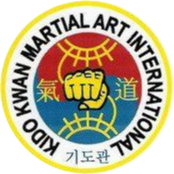
Average Rating